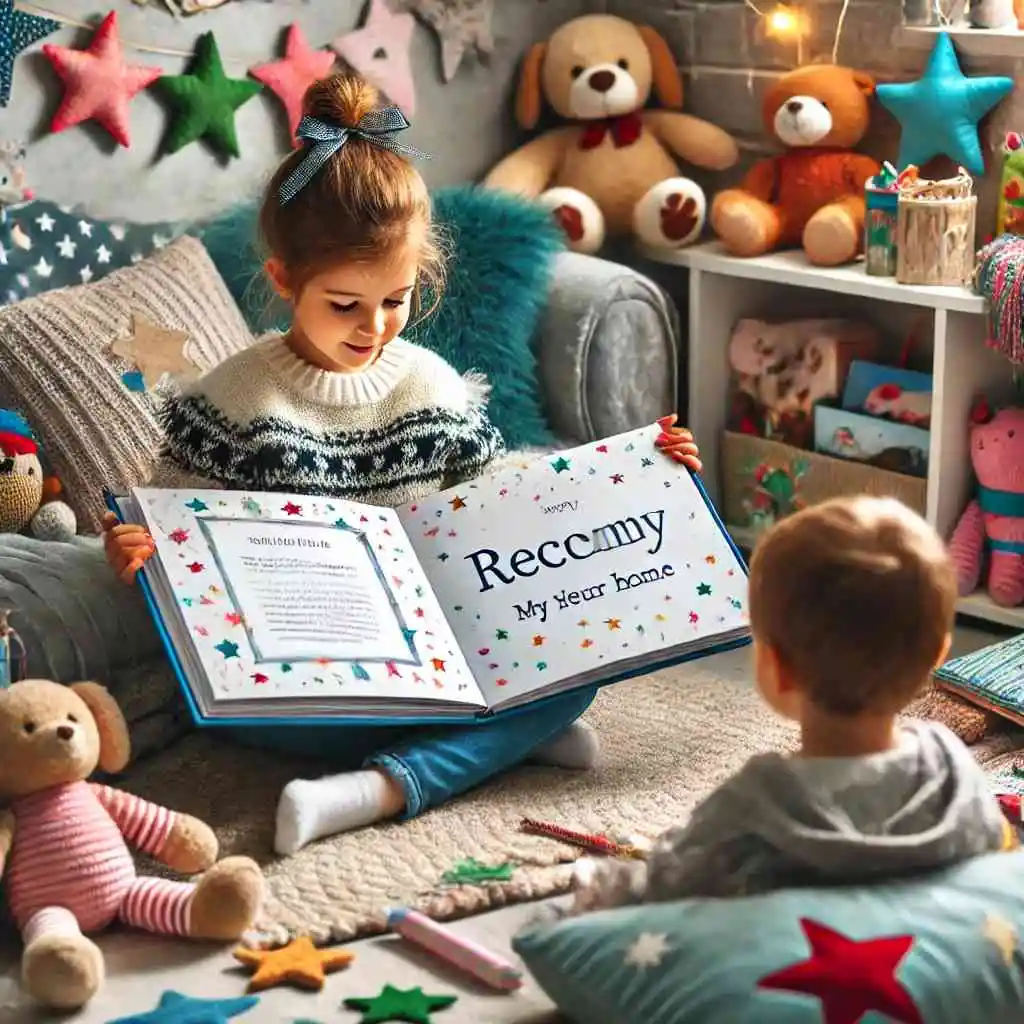Discussing Different Types of Loss
Understanding Different Types of Loss
Loss is an inevitable part of life, and it’s something everyone experiences at some point. When it comes to children, discussing loss can be challenging. They may not fully understand what has happened or how to express their feelings. However, it’s crucial to talk to them about different types of loss, from losing a pet to the passing of a family member or friend. Each type of loss is unique and affects children differently.
When discussing the loss of a pet, you can explain that pets have shorter lifespans than humans. Tell them about the happy moments and the joy the pet brought to your family. Encourage your child to share their favorite memories of the pet. This helps them understand that it’s okay to feel sad, but also to remember the good times.
Loss of a Family Member

Losing a family member is one of the most challenging experiences for anyone, especially children. It’s important to approach this topic with sensitivity and honesty. Use simple language to explain what has happened, avoiding euphemisms that might confuse them. For example, instead of saying someone “went to sleep,” you can say that their body stopped working and they won’t be coming back.
Encourage your child to ask questions and express their feelings. You might say, “It’s okay to feel sad or angry. Let’s talk about how you’re feeling.” This openness helps them feel safe to share their emotions. Remind them that it’s normal to miss the person who has passed away and to feel a range of emotions, from sadness to anger to confusion.
Coping with the Loss of a Friend
Losing a friend can be just as tough as losing a family member. Children often form deep bonds with their friends, and the loss can be very impactful. When discussing this type of loss, it’s important to acknowledge their feelings and validate their grief. You can start by saying, “I know how much your friend meant to you, and it’s okay to be upset.”
Help your child remember the good times they shared with their friend. Encourage them to draw pictures, write stories, or create a memory box with items that remind them of their friend. These activities can be therapeutic and provide a way for them to process their grief. Reassure them that while their friend may no longer be physically present, the memories and love they shared will always remain.
Using Stories and Books

Books and stories are excellent tools for discussing loss with children. They provide a safe space for children to explore their feelings and understand that they are not alone in their grief. Choose books that are age-appropriate and have positive messages about dealing with loss. Reading together can open up conversations and help children articulate their feelings.
For younger children, picture books with simple stories about loss can be very effective. These books often have gentle illustrations and narratives that resonate with young readers. For older children, chapter books that deal with loss and recovery can provide more in-depth exploration of their emotions.
Creating a Safe Environment for Discussion

Creating a safe environment for discussing loss is crucial. Ensure your child knows they can come to you with any questions or feelings they have. Be patient and give them time to express themselves. Sometimes, children might not want to talk immediately, and that’s okay. Let them know that you’re there for them whenever they’re ready.
You can create a routine where you check in with your child about how they’re feeling. This routine can be as simple as a nightly chat before bed or a weekly special time to talk. This consistent support helps your child feel secure and understood during a difficult time.
Encouraging Emotional Expression

Encouraging your child to express their emotions is vital. Let them know that all feelings are valid and it’s okay to cry or be upset. Provide them with outlets for their emotions, such as drawing, writing, or talking about their feelings. These activities can help them process their grief in a healthy way.
One way to encourage emotional expression is through creative activities. Drawing pictures of their loved one or writing a letter to them can be very cathartic. These activities give children a way to channel their emotions and begin to heal.
Seeking Additional Support
Sometimes, children may need additional support to cope with their loss. It’s important to recognize when they might benefit from talking to a counselor or joining a support group. These resources can provide specialized help and a safe space for your child to express their feelings.
If you notice that your child is having a particularly hard time, don’t hesitate to seek professional help. Signs that they might need extra support include persistent sadness, changes in behavior, or difficulty performing daily activities. A professional can offer guidance and strategies to help your child navigate their grief.
Final Thoughts
Discussing different types of loss with children can be challenging, but it’s an essential part of helping them understand and process their feelings. By approaching the topic with sensitivity, honesty, and support, you can help your child navigate their grief and remember their loved ones with fondness and love.
Tailoring Conversations to Age Groups

When it comes to discussing difficult topics with children, understanding how to tailor conversations to their age group is essential. This helps ensure that they not only understand but also feel comfortable and supported. Here’s how you can make these important talks more effective and age-appropriate.
Understanding Developmental Stages
Children at different ages have varied levels of understanding and ways of processing information. For the youngest kids, simple and direct language works best. You don’t need to use complex terms or explanations. For example, if you’re discussing the loss of a pet with a preschooler, you might say, “Our doggy was very old and tired. Now he is resting and won’t be with us anymore.” This helps them grasp the concept without overwhelming them.
School-aged children can handle a bit more detail. You can explain things in a way that includes some reasoning but still keep it straightforward. For instance, you might say, “Grandma was very sick for a long time, and her body couldn’t get better, so she passed away. It’s okay to feel sad, and we can talk about it whenever you need.” This provides clarity while also inviting them to express their feelings.
Teens, on the other hand, are capable of understanding more complex and abstract ideas. You can have more in-depth discussions, allowing them to ask questions and explore their thoughts and feelings. For example, you might explain, “When someone dies, their body stops working completely. Everyone handles grief differently, and it’s important to talk about our feelings. If you have questions or just need to talk, I’m here for you.”
Using Stories and Examples

One effective way to tailor conversations is by using stories and relatable examples. Younger children respond well to stories involving their favorite characters or animals. You can create a narrative that mirrors the situation you’re discussing. For example, “Once upon a time, there was a little cat named Whiskers who got very tired and had to go to a special place where all tired animals go to rest forever.” This approach helps them understand through a familiar and comforting medium.
For school-aged kids, you can use books or movies they are familiar with to draw parallels. Perhaps there’s a scene in a beloved film where a character faces a similar situation. Discussing how that character felt and what they did can make the conversation more relatable and less intimidating.
With teens, using real-life examples or discussing relevant news stories can be beneficial. They appreciate honesty and the chance to engage in meaningful dialogue. You might talk about a news story and then relate it back to their own experiences, helping them to process and understand the situation better.
Encouraging Questions and Open Dialogue
No matter the age, it’s crucial to encourage children to ask questions and express their feelings. For younger kids, reassure them that it’s okay to ask anything and there are no silly questions. You might say, “If you’re wondering about anything, just ask me. I’m here to help you understand.”
For school-aged children, you can be more proactive in asking them how they feel about the topic and if there’s anything they’re unsure about. For example, “How do you feel about what we talked about? Is there anything that doesn’t make sense to you?” This keeps the conversation open and ongoing.
Teens might need more space but also assurance that their feelings and questions are valid. You can say, “I know these topics can be tough to talk about. If you have questions or just need to vent, I’m always here to listen.” This encourages them to come to you when they’re ready.
Providing Comfort and Reassurance

Conversations about tough topics can be scary for children, no matter their age. Providing comfort and reassurance is key. With younger children, physical comfort like hugs can go a long way. You can also use soothing language and reassure them that they are safe and loved.
For school-aged children, offer reassurance through words and actions. Let them know that their feelings are normal and that it’s okay to be sad, angry, or confused. Say things like, “It’s okay to feel how you’re feeling. We’re in this together.”
Teens need emotional support and validation. Let them know that it’s okay to feel overwhelmed and that there’s no right or wrong way to process their emotions. You can reassure them by saying, “It’s normal to feel a range of emotions, and it’s okay to not have all the answers right now. We’ll work through this together.”
Tailoring the Approach
Tailoring your approach means adjusting not only your language but also your demeanor and the setting of the conversation. For younger kids, a calm and familiar setting like their bedroom or a cozy corner of the house is ideal. Speak softly and maintain eye contact to make them feel secure.
With school-aged children, choose a quiet, private place where they feel comfortable. Use a calm tone and be patient, giving them time to process and respond.
Teens might prefer a more neutral setting, like a quiet café or a walk in the park. This can help them feel less pressured and more open to talking. Respect their space and be an active listener, showing that you value their thoughts and feelings.
Adapting Over Time

Remember, tailoring conversations to age groups is not a one-time thing. As children grow and their understanding deepens, you will need to adapt your approach. Be prepared to revisit topics and provide more information as needed. Stay patient and open, and let your child’s needs guide the conversation.
In conclusion, tailoring conversations to age groups requires understanding, patience, and a lot of empathy. By adjusting your approach to suit their developmental stage, using relatable stories, encouraging questions, providing reassurance, and adapting over time, you can make these difficult talks a bit easier for both you and your child. Remember, the goal is to help them feel understood and supported, no matter what they’re facing.
Utilizing Personalized Books to Engage and Educate Children
The Magic of Personalization
Personalized books are a wonderful way to engage children in reading. Imagine the look of delight on your child’s face when they see their name and story woven into the narrative! Personalized books create a magical experience, making children feel special and more connected to the story. You can use these books to teach important life lessons in a fun and relatable way. They aren’t just books; they’re adventures where your child is the hero.
Personalized books are designed to capture your child’s imagination. The stories often incorporate details from your child’s life, such as their favorite activities, friends, or even family pets. This level of personalization makes reading more enjoyable and helps children develop a love for books. When a child sees themselves as the main character, they’re more likely to engage with the story and absorb its messages.
Creating a Lasting Impact

When you use personalized books, you are not only providing entertainment but also making a lasting impact on your child’s learning and development. Children are more likely to remember lessons learned from stories that feature them as the protagonist. This approach can be especially effective when teaching difficult subjects like safety, empathy, or coping with loss. Personalized books help children see themselves in various scenarios, which can be incredibly powerful.
The impact of personalized books extends beyond just reading. They can spark conversations between you and your child about the themes and lessons in the story. This can lead to deeper understanding and application of these lessons in real life. For example, a story about a child overcoming a challenge can inspire your child to face their own challenges with confidence. It’s a subtle yet effective way to teach resilience and problem-solving skills.
Making Learning Fun
One of the greatest benefits of personalized books is that they make learning fun. Children often learn best through play and stories, and personalized books combine both elements beautifully. These books can cover a wide range of topics, from basic literacy and numeracy to more complex subjects like social skills and emotional intelligence. By turning these topics into personalized adventures, you can keep your child engaged and excited about learning.
Personalized books also offer a unique opportunity to tailor the learning experience to your child’s interests and needs. If your child loves animals, you can choose a personalized book that features them in a safari adventure. If they’re interested in space, you can find a story that takes them on an intergalactic journey. The possibilities are endless, and the result is a learning experience that feels more like fun than work.
Building Self-Esteem and Confidence

Personalized books can be a fantastic tool for building your child’s self-esteem and confidence. When children see themselves as the hero of their own story, it can boost their self-image and encourage them to believe in their abilities. This is particularly important during the early years when children are developing their sense of self and identity. Personalized books can reinforce positive traits and values, helping your child to see themselves in a positive light.
You can use personalized books to celebrate your child’s achievements and milestones. For example, a personalized book about starting school can help ease any anxiety your child might have about this big transition. By seeing themselves successfully navigating this new experience in the story, your child can feel more confident about facing it in real life. This can make a huge difference in how they approach new challenges and opportunities.
Encouraging Family Bonding

Reading personalized books together can be a wonderful bonding activity for the whole family. It provides an opportunity for quality time and shared experiences. You can snuggle up with your child and dive into a world where they are the star. This not only makes reading more enjoyable but also strengthens your family bonds. You can laugh together at the funny parts, discuss the important lessons, and create lasting memories.
Personalized books can also be a great way to involve other family members in your child’s learning journey. Grandparents, aunts, uncles, and older siblings can all join in the fun of reading a story that features your child. This can help create a sense of connection and support, showing your child that they have a whole team cheering them on. It’s a wonderful way to bring the family closer together and foster a love of reading.
Adapting to Your Child’s Growth
As your child grows and their interests change, personalized books can adapt to keep pace. You can find personalized stories for every age and stage, ensuring that your child always has something engaging to read. Whether they’re learning to read on their own or still enjoying bedtime stories with you, there’s a personalized book out there that’s just right for them. This adaptability makes personalized books a versatile addition to your child’s library.
Personalized books can also grow with your child in terms of content and complexity. As they move from simple picture books to more detailed stories, you can choose personalized books that challenge them and help develop their reading skills. This ensures that reading remains a fun and rewarding experience, encouraging a lifelong love of books. By continuously providing personalized stories that captivate and educate, you can support your child’s growth and development at every stage.
Activities to Help Children Cope
When a child faces loss, helping them cope is crucial. You can create a supportive and healing environment through various activities. These activities offer comfort and understanding while promoting emotional expression. Let’s explore some fun and engaging ways to help your child navigate their feelings during tough times.
1. Creative Expression Through Art

Art is a powerful tool for children to express their emotions. Set up a cozy art station with paper, crayons, markers, and paint. Encourage your child to draw or paint their feelings. You might say, “Draw what makes you feel happy,” or “Paint a picture of your favorite memory.” This activity allows children to channel their emotions creatively. It’s also an excellent opportunity for you to talk about their artwork and feelings. You might discover hidden thoughts and emotions they find hard to verbalize.
Another fun idea is to create a memory box. Find a small box and let your child decorate it. They can fill it with drawings, photos, and small items that remind them of happy times. This tangible collection can provide comfort and a sense of connection to their lost loved one.
2. Storytelling and Reading Together

Storytelling is a fantastic way to help children understand and process loss. Choose books that address loss and grief in an age-appropriate manner. Reading together can open up conversations about their feelings. You can ask questions like, “How do you think the character feels?” or “What would you do in that situation?” These discussions can help your child relate to the story and express their thoughts.
You can also create your own stories. Ask your child to invent a tale about a character experiencing something similar. Guide the story towards a positive resolution, highlighting coping strategies and emotional resilience. This activity not only fosters creativity but also empowers children by giving them control over the narrative.
3. Physical Activities and Outdoor Play

Physical activities are essential for emotional well-being. Encourage your child to engage in outdoor play, which can be both therapeutic and fun. Simple activities like running, jumping, or playing ball games can help release pent-up energy and reduce stress. Nature walks are also a great way to calm the mind. You can explore a local park, observe animals, or collect leaves and stones. Use this time to talk about nature’s cycle of life and renewal, subtly connecting it to their own experiences.
Consider incorporating yoga or mindfulness exercises into their routine. Simple breathing exercises or guided visualizations can help children manage their emotions. For example, you might guide them to imagine a peaceful place where they feel safe and happy. These practices can provide tools for coping with difficult emotions and fostering inner peace.
4. Baking and Cooking Together

Baking and cooking can be comforting and offer a sense of routine. Involve your child in making their favorite recipes or trying new ones. The process of measuring, mixing, and decorating can be therapeutic. It provides a fun distraction while also teaching valuable skills. Baking cookies, decorating cupcakes, or making a favorite meal together can create positive memories and moments of joy.
Use this time to encourage conversations. Ask your child about their day, their thoughts, and feelings. Sometimes, talking while engaged in an activity can make it easier for children to open up. Plus, the end result of delicious treats can bring smiles and a sense of accomplishment.
5. Creating Rituals and Traditions

Rituals and traditions can provide comfort and stability during times of loss. Establishing new rituals can help your child feel connected and secure. For example, you might light a candle at dinner in memory of a loved one or create a special bedtime routine. These rituals can be simple yet meaningful, offering a sense of continuity and remembrance.
You can also involve your child in planning and creating these traditions. Ask for their ideas and incorporate their suggestions. This inclusion helps them feel valued and part of the healing process. It can also give them something to look forward to and rely on during challenging times.
6. Music and Dance

Music and dance can be powerful outlets for emotion. Play your child’s favorite songs and encourage them to sing along or dance. Music has a unique way of expressing feelings that words sometimes can’t. Dancing can also be a fun and liberating way to release emotions.
You might create a “feelings playlist” with songs that reflect different moods. Listen to the playlist together and talk about how each song makes you feel. This activity can help your child identify and articulate their emotions, fostering a deeper understanding of their inner world.
7. Pet Therapy

If you have a pet, involving them in your child’s daily routine can be incredibly comforting. Pets offer unconditional love and companionship, which can be especially soothing during times of grief. Encourage your child to spend time with the pet, whether it’s walking the dog, playing with a cat, or simply cuddling. The presence of a pet can provide emotional support and a sense of normalcy.
If you don’t have a pet, consider visiting a local animal shelter or arranging playdates with friends’ pets. Interaction with animals can reduce stress and provide a joyful distraction from difficult emotions.
By incorporating these activities into your child’s routine, you provide them with valuable tools to cope with loss. Each activity is designed to foster emotional expression, provide comfort, and create positive memories. Remember, the goal is to support your child through their journey of healing in a fun and engaging way.



